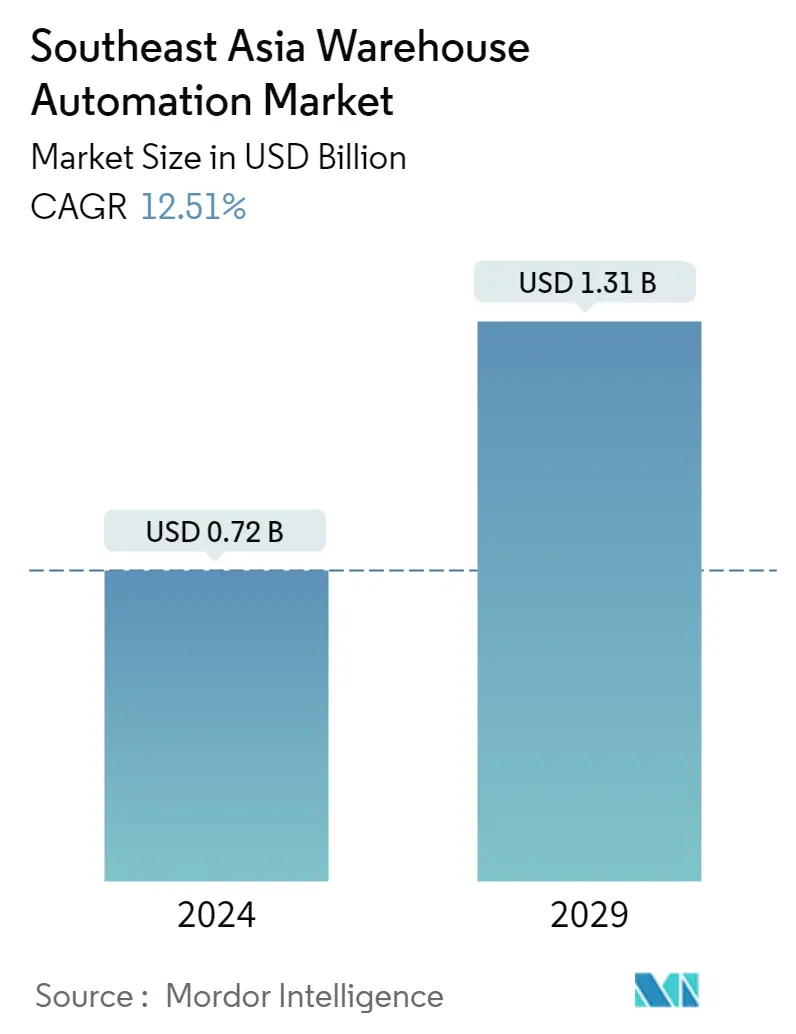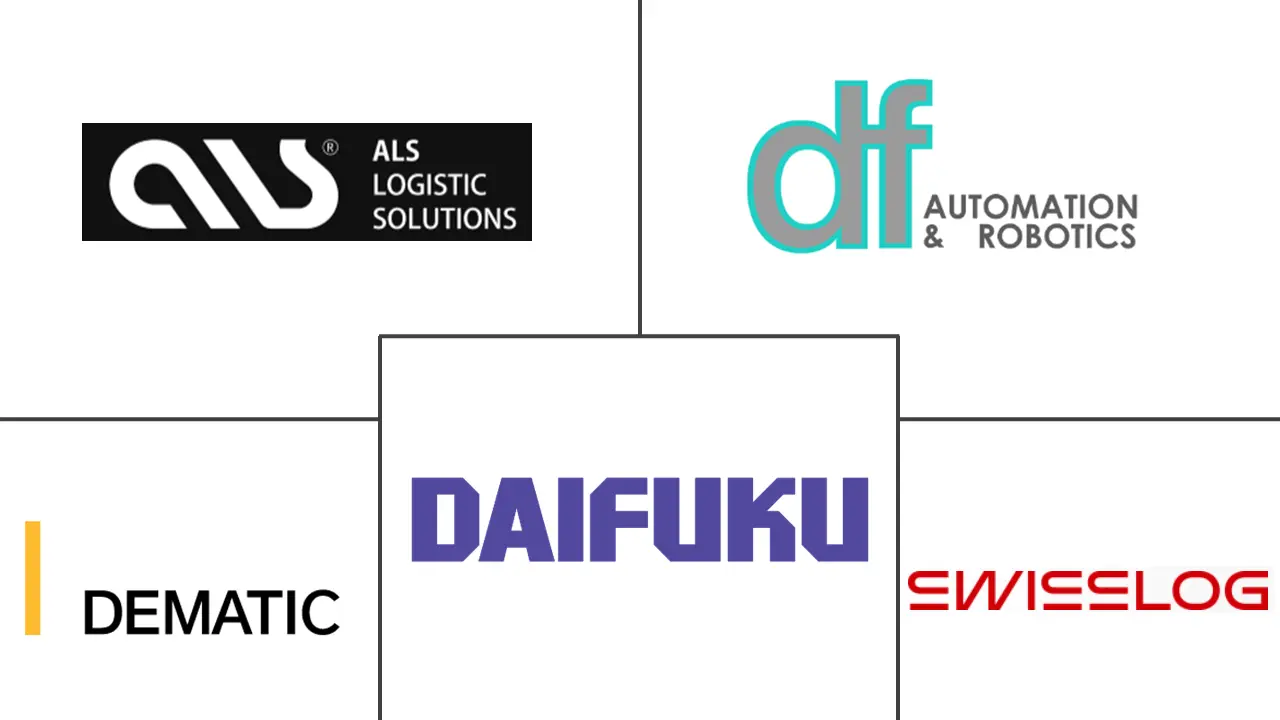Market Size of Southeast Asia Warehouse Automation Industry

| Study Period | 2019 - 2029 |
| Base Year For Estimation | 2023 |
| Market Size (2024) | USD 0.72 Billion |
| Market Size (2029) | USD 1.31 Billion |
| CAGR (2024 - 2029) | 12.51 % |
| Market Concentration | Low |
Major Players
*Disclaimer: Major Players sorted in no particular order |
Need a report that reflects how COVID-19 has impacted this market and its growth?
Southeast Asia Warehouse Automation Market Analysis
The Southeast Asia Warehouse Automation Market size is estimated at USD 0.72 billion in 2024, and is expected to reach USD 1.31 billion by 2029, growing at a CAGR of 12.51% during the forecast period (2024-2029).
Over the projected period, the market in Southeast Asia will be driven by rising production complexity, technological advancement, and the rapid rise of the e-commerce industry. Furthermore, the emergence of several startup firms with strong technological capabilities and financial backups supports the studied market's growth.
- As investments in automation are prevalent across all industrial markets, warehouse operators are increasingly adopting automation technologies to boost operational efficiency and productivity and minimize handling time. With a range of investment and value-creation opportunities, the studied market is expected to witness steady growth in the next few years.
- The increased volume of e-commerce will drive the industry ahead. Warehouse automation is increasingly establishing the trump card for companies pursuing a competitive edge, especially in the competitive e-grocery market, as traders struggle to keep up with the expanding number of transactions and related last-mile shipping needs. According to the International Trade Administration (ITA), the e-commerce market in Singapore is expected to reach USD 10 billion by 2026.
- Furthermore, Thailand's usage of autonomous guide vehicles in industries and warehouses, especially healthcare, is expected to increase by 60% per annum to over 700,000 units by 2022, according to the International Federation of Robotics, and is expected to increase in the coming years. During the forecast period, the growth of the studied market should be helped by the fact that robotic technology is being used more and more in different industries.
- However, obstacles such as a shortage of experienced workers, high investment, and technical problems associated with warehouse robotics are expected to restrain the Southeast Asia warehouse automation market over the forecast period.
- The COVID-19 outbreak hastened the shift to e-commerce, resulting in a shift in customer behavior. A variety of payment options has also contributed to the online purchase. Following the pandemic, the most significant and rising developments have included micro-fulfillment centers, e-grocery expansion, dark stores, and automated cold storage. Increasing investments by players in these sectors are expected to propel market expansion in the post-covid period. Tee Yih Jia Food Manufacturing Pte Ltd and SSI Schafer, for example, announced in February 2022 the opening of Singapore's largest automation rack-clad high bay warehouse, storing capacity at Tee Yih Jia's newest USD 450 million production plant in Senoko.
